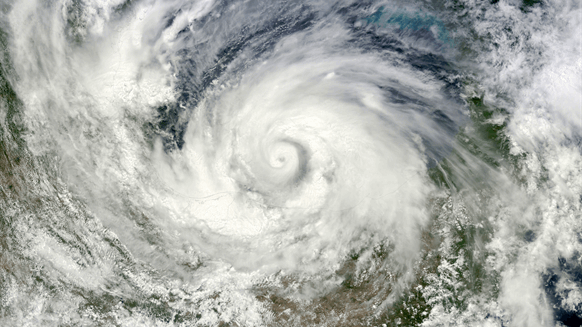The US Department of Commerce’s National Oceanic and Atmospheric Administration (NOAA) has revealed that it has selected Mike Brennan to be the next director of NOAA’s National Hurricane Center (NHC) in Miami.
Brennan has spent nearly all of his 15-year NOAA career at NHC, and for the past year has served as NHC’s acting deputy director, NOOA noted in a statement posted on its website. The new director of the NHC, who began his career at the NHC in 2008 as a senior hurricane specialist, has since 2018 served as branch chief of the Hurricane Specialist Unit.
In June 2022, NOAA revealed that Kenneth Graham had become NOAA’s next Assistant Administrator for Weather Services and the 17th Director of the National Weather Service. He has been director of the NHC since April 2018.
Jamie Rhome, the NHC’s deputy director at the time, assumed the role of interim director after Graham’s departure. Rhome served in various roles at the Hurricane Center since 1999, from forecaster to hurricane and storm surge specialist. He will resume his duties as deputy director of the NHC, NOOA, he said in his latest statement.
“Director of the NHC is one of the most visible and important jobs in the country, and Mike possesses the right combination of experience, leadership and personal traits to prepare and guide us through major storms,” he said. NOAA Administrator Rick Spinrad said in a statement from the organization.
“Alongside our trusted and dedicated team at NHC, Mike will continue to leverage vital partnerships to deliver the best forecasts and improve resilience to hurricane impacts in US communities,” he added.
Commenting on the new NOAA appointment, Graham said, “I had the pleasure of working with Mike for four years at NHC, where I observed his steadfast dedication to the mission of saving lives and property.”
“Mike is an innovator who has built incredible relationships across the agency and with our emergency management and media partners, and I look forward to great things ahead at NHC under his leadership,” he added.
Brennan said, “I am honored and humbled to work with the talented staff at the National Hurricane Center at a time when we are making exciting advances in hurricane forecasting and developing new decision support tools to improve the resilience of the community in the face of powerful hurricanes and tropical storms.”
“Together with our colleagues at the National Weather Service and NOAA, we are working to improve community safety through clear communication about the various dangers these storms pose,” he added.
“I would like to thank Jamie Rhome for his continued leadership as acting director of the NHC through 14 named storms of the 2022 Atlantic hurricane season, including the recently retired Hurricanes Ian and Fiona,” he continue Graham.
In its statement, NOAA noted that preparations continue ahead of the 2023 hurricane season. Earlier this year, a NOAA spokesperson told Rigzone that the organization will release its Atlantic Basin, which includes Gulf of Mexico and Caribbean spring hurricane season forecasts.
“This usually happens at the end of May,” the spokesman said at the time.
Atlantic weather systems have severely affected oil and gas operations in the past. For example, at its peak, Hurricane Ida shut down 95.65 percent of Gulf of Mexico oil production on Aug. 29, 2021, and 94.47 percent of Gulf of Mexico gas production on Aug. 31, 2021, figures from the Office of Environmental Safety and Compliance show.
In May 2022, meteorologists at NOAA’s Climate Prediction Center, a division of the National Weather Service, predicts above-average Atlantic hurricane activity by 2022. NOAA’s annual midseason update released in early August by the Climate Prediction Center described that atmospheric and oceanic conditions still favored an above-normal 2022 Atlantic hurricane season.
In September last year, Chevron and BP revealed they were shutting down production in response to Hurricane Ian.
To contact the author, please send an email andreas.exarcheas@rigzone.com


